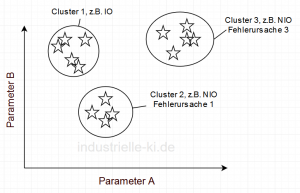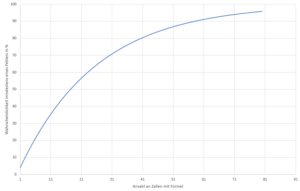I haven’t written anything for a long time, but the topic of Generative AI is definitely worth an article. And yes, I do my own research and writing here and don’t have any texts generated. That’s important to me because this blog is mainly about my personal development through dealing with a topic.
What is GenAI?
Before we get to applications, this question needs to be roughly clarified.
Generative Artificial Intelligence, or GenAI for short, is a field of computer science. The aim is to create new data by learning from existing data. Neural networks are primarily used for this purpose, which are trained on a very large database and adapted to the specific task if necessary. During the processing of the task, there is no user intervention (non-supervised) – however, humans are very much involved in the creation of the model.
The best-known representative at present is ChatGPT from OpenAI. However, this is by no means the only model; there are thousands more on services such as Huggingface.
It is not only possible to create text from a text input. The generated data can also be images, videos or sound.
What are possible fields of application in an industrial context?
- Generating software code
This is certainly the best-known use case, which I won’t say much about here. Others can do it better. Typically, a chatbot provides support for the programmer. In other words, suggestions for the implementation of typical problems are given via questions and answers or code is generated directly for insertion into the user’s own project.
2) Generating test cases for software
Testing software is an important task to ensure its quality. Unfortunately, it is also an unpopular task. This can be supported by deriving test cases from the description of the code.
3) Generate training data for Automatic Optical Inspection
Automatic optical inspection (AOI) is often used in large-scale production to subject individual work steps or products to a 100% inspection. For example, the completeness of a weld seam or the correctness of an assembly. An image is captured and evaluated. Classic machine learning.
GenAI can be used to generate images of defects that are used for training. This is easier and cheaper than producing them and all borderline cases can be covered.
4) Generation of documentation
The title is deliberately kept general. Documentation is required at many points in product development and production and is often neglected. Be it software, test results or summaries of patent texts.
5) Search for internal or external information (knowledge management)
Patents can also form the data basis here, as can other available information such as scientific publications. There is an unmanageable amount of material that is added to on a daily basis. It is simply no longer possible for one person to read it all. And the spread of GenAI will only accelerate this trend.
In larger companies in particular, this will quickly apply to some documents.
Searching for the relevant information is difficult, but can be easily solved by feeding a model with precisely this data and a chatbot.
“What is the hourly rate for system X?”, ‘What steps must be taken when reporting sick?’ or similar questions can be answered easily and the document in which the meeting was found can be returned so that the original text can be read directly.
6) Requirements planning
A big question for production. How many resources do I need to have available at time X in order to be prepared for customer call-offs?
When creating a forecast from existing data, GenAI can help planners in logistics and the supply chain to make the right decisions.
7) Pattern recognition in production
In many companies, large amounts of data are generated in production. However, this data is often not analyzed or not fully analyzed. It is often the case that only limit value violations are searched for and therefore the reaction to slowly declining quality, for example, is rather late. There is simply not enough time to continuously monitor trends. GenAI can look for patterns and deviations in the data and point them out to experts.
8) Process control
Process parameters can be adjusted automatically during ongoing production. These are used instead of manual interventions or control loops to adjust process parameters. An example of an application in practice is the production of potato chips – potato chips.
Here I would like to point out that it should be carefully examined whether the use of AI is actually superior to classic control technology. Requirements in terms of intervention frequency or real-time capability in particular are difficult to meet.
9) Writing product descriptions
GenAI can use basic data from similar products to create descriptions for internal or external use.
Always following the same pattern and always up-to-date.
10) Cybersecurity
Although this is not a topic in my blog, it is a very important one. Similar to the generation of error cases for automatic optical inspection – use case no. 3 – possible attack vectors can also be created here and reactions trained.
11) On-the-fly documentation
Standardized and meaningful documentation for dynamic situations can make all the difference. Be it for your own management or for the customer. However, these documents are created under high time pressure and can therefore contain errors.
GenAI can help here on the basis of a template to at least get the presentation of the content error-free.
12) Merging text into list of tasks
Tasks can be transferred from many sources in everyday life – emails, Excel lists, chat messages etc.. Instead of merging these manually, GenAI can create a file with all tasks and keep it up to date. This can be done for individual people or for an entire team.
Important: however, a single point of truth must be maintained. So if the processing of a task is to be confirmed at one point, the link must be transferred to the summarized list.
Of course, this list of use cases does not aspire to be exhaustive; rather, these are the topics that I have encountered so far.
Additions are welcome.



